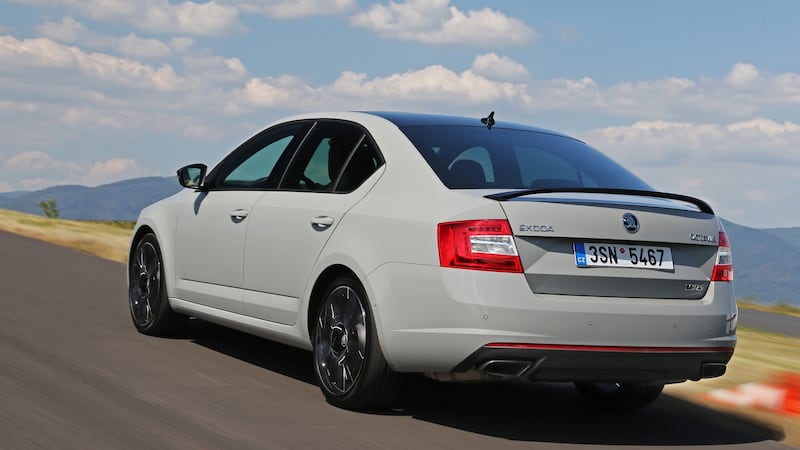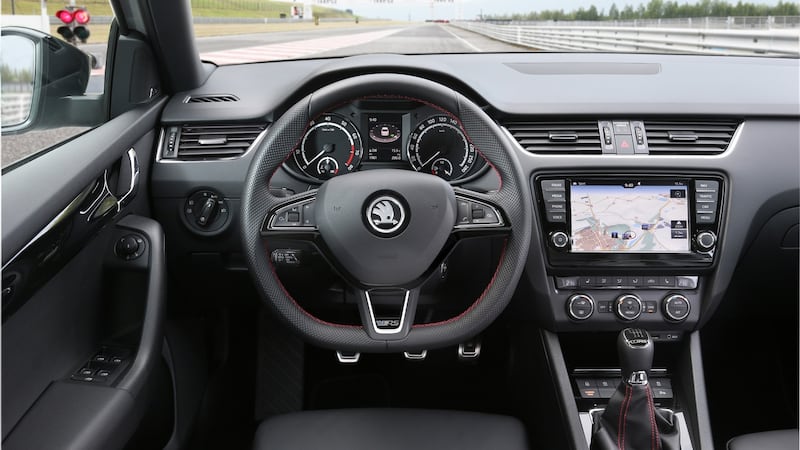I can only blame for this a misspent youth in west Cork. Not in snooker halls (there was only one), nor public bars (plenty of those but I was never much of a drinker), but instead standing out on cold hillsides, in damp forests and atop mossy ditches enjoying the endurance of rally spectating.
There was even the occasional bit of participation – not behind the wheel (I was a penniless teenager) but as helper and general gopher for a local team. Shifting tyres around, helping with refuelling, that sort of thing.
The hardy life of the rally fan will convince you of a few things. One: anoraks are not fashionable but they are warm and waterproof.


Two: if your dad forgets to pick you up it’s a long walk back to town from the end of Special Stage 10. And, three: you really need a practical car.
As a teenage car nut, I never cared much for mid-engined Italian exotica or bombastic German super-coupes.
No, what I craved then and continue to crave now is a practical, spacious and comfortable four-door saloon with a big boot.
Add to that wish list an engine with more than sufficient poke and a chassis and steering that can cope with both the sweeping curves and crippling bumps of the Corkonian roads of my youth and you’ve got pretty much my perfect car.
Skoda, it seems, has been quietly doing an Inception and sneaking into my dreams at night.
I already thoroughly liked the existing Octavia RS, but now it has been made more than it was.
More power, more poise and more enjoyment, yet without compromising the things that make it a useful car to have around when you and three other big blokes have to get to Killarney before breakfast.
Golf in Czech clothing
We have, of course, driven this car before, in many guises. Just as the standard Octavia is, to all intents and purposes, a
VW
Golf with a Czech badge and a bigger body, so the RS model is a Golf GTI carrying a few more pounds around its hips.
Both GTI and RS share the same 220hp 2.0-litre turbo TSI engine, and when you pick the “Performance Pack” option for the Golf (and you really, really should) then you get an extra 10hp, bringing it to 230hp (torque remains unchanged at 350Nm).
Now the Skoda gets the same 10hp boost, but if you can tell the difference between 220hp and 230hp on the road then frankly your name is Stirling Moss. Mine isn't and I can't. That's not the point, though.
The point is not that the Octavia RS 230 is quicker than the standard RS (there’s about a 0.1-second difference in the 0-100 kmh time) but that it feels better. Sharper, more honed, more athletic.
You know that feeling when you buy a new pair of sneakers and spend 10 minutes bouncing around the kitchen feeling like Usain Bolt? That’s what it feels like strapping on the RS 230. It’s not dramatically different to the RS, but it is . . . more.
The big difference, in a mechanical sense, is the electronically-controlled differential that sits between the front wheels.
Before you start rolling your eyes and complaining about my tech-head tendencies, this is important.
The standard RS doesn’t get it but it transforms the handling and steering.
That steering is weightier, feels faster and more accurate, and delivers at least a reasonable amount of feedback to your fingertips and palms.
Better still, the diff helps those fat, low-profile front tyres (sitting on gorgeous black-finish alloys with machine-finish bright bits) find grip and traction where the standard RS would struggle a little more to put its power down.
It also makes the car far more adjustable in corners – add power to dig the nose in deeper, back off to run a little wide.
There’s a safety aspect to this, too (honest, there is), because the diff will help you control the car better when the weather is poor and the road is slippery.
Same but different
What about the rest of the RS? Well, it’s basically the same. The cabin is plain and under-styled but beautifully made.
The high-back “tombstone” RS seats, with stitched-in RS logo, look great and feel better, and there is still that sense of unencumbered vastness in the back seats and the boot.
It costs €35,995 to buy and €390 to tax, which sounds pretty reasonable to me. You could spend similar money on a bottom-rung BMW or Audi, but why? This is far more enjoyable, and far more practical at the same time.
Is it a little less sharp than the Golf GTI PP? Yes – thank the approximately 65kg of additional weight, and some strict VW Group engineering hierarchies for that, but I’d still have the Skoda.
The boot space alone would sway me, plus I think it's more handsome than the Golf. You could have a Seat Leon Cupra with the same chassis and an extra 60hp, but the interior is not as nice as that of the Octavia.
A while back, someone who knows about marketing and customer demographics told me that most Octavia RS models sold in Ireland went to single males, living rurally and often with their parents – hence their ability to afford a large chunk of change.
Single, male and mobile
Yup, that sounds like me if you wind the clock back a few years, and something tells me that these single males are after the same thing I was back then – something fast, something fun, something useful and something not so fragile that your favourite backroad was going to break it.
I feel a holiday in west Cork coming on . . .
The lowdown: Octavia RS 230
Price: €35,995 as tested; Octavia RS range starts at €33,495
Power: 230hp
Torque: 350Nm
0-100kmh: 6.8sec
Top speed: 250kmh
Claimed economy: 6.2l/100km (44mpg)
CO2 emissions: 142g/km
Motor tax: €390








